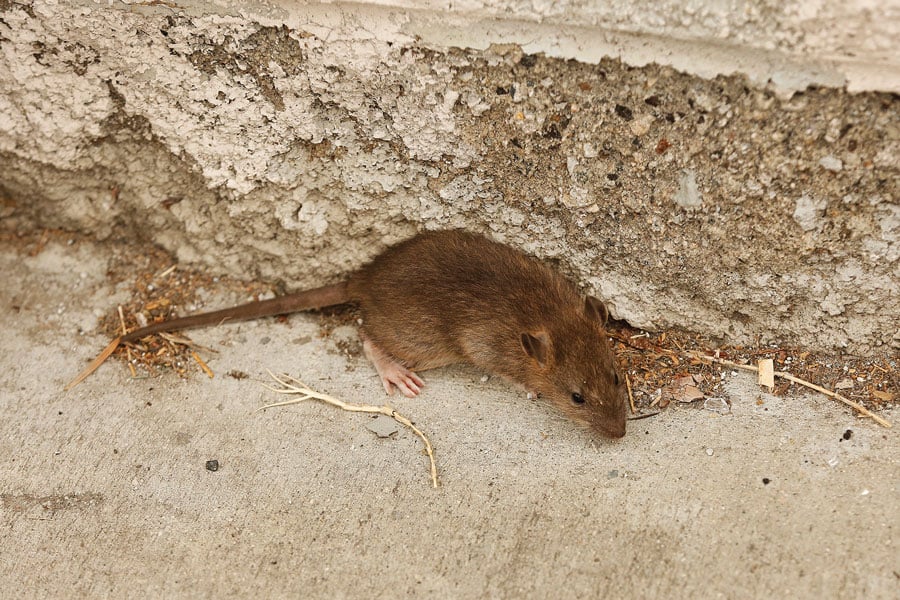Number of rat complaints down from 2015
One of several rats scurry around the scene as Los Angeles Bureau of Sanitation crews clean up a homeless encampment in Los Angeles on May 23, 2019. The number of rat complaints in Evanston has decreased over the past four years.
November 13, 2019
The number of rodent service requests regarding rats has gone down by nearly 50 percent since 2015, city staff said at a meeting Wednesday at the Levy Senior Center.
Interim public health manager Greg Olsen said there were 1,314 rodent services requests in 2015 and around 540 as of Nov. 4, 2019. He said the 2019 total will likely reach around 600 requests.
Olsen said the initial increase from 771 requests in 2014 to 1,314 in 2015 was likely due to the release of a heat map showing the number of requests in Evanston by city block.
“Basically it was drawing attention to, ‘Yes, Evanston has a rat problem,’” Olsen said. “Once it got out into the media, once it got out into City Council, that helped us do our job and minimize the rat population.”
Olsen said Evanston uses a “integrated pest management system,” in which inspectors identify the problem, collect information on the rodents, take steps to remove the rodents from the area, try to remove their sources of food, water and shelter, and determine the rodents’ travel patterns so they can bait the path with rodenticide.
He added that it is highly unlikely that rodenticide could harm a dog.
“(The system is) a way of going about it in a scientific systematic way,” Olsen said. “So we’re not just throwing poisons and pesticides at the problem and hoping it takes effect and goes away.”
Ashley Mcilwee, an Evanston environmental health practitioner, said the city also has inspectors who look into areas or homes that might attract rats. She said leaving dog waste outside for over 24 hours, having overgrown grass, overflowing garbage or wood piles can provide sources of food or shelter for rats.
Olsen said rats generally travel, and a rat burrow found in one alley or one house can affect an entire city block. He said when a resident makes a complaint about one area, the city also checks the surroundings.
Mcilwee added that the city conducts “rodent walks” twice a year where three inspectors use Evanston’s 311 data to check areas where residents have previously complained about rats.
“It really does take a community wide effort in order to manage the rat control population,” Mcilwee said.
Mcilwee emphasized that rats only need a small amount of food to survive. Olsen said they can fit through any opening that is the size of a quarter.
The goal, Olsen added, is not to completely get rid of rats but to “build them out of our homes” by closing openings in garages and picking up overflowing garbage.
“They’ve been here long before us,” Olsen said, “and they’ll be here probably after us too.”
Jim Crawford — the Wheeling, Illinois branch manager of Rose Pest Solutions, which works with the city — said rats are “incredibly smart” but that Evanston’s program has been successful at minimizing the problem.
“They’ve been so proactive,” Crawford said. “There are far worse neighborhoods and towns than Evanston.”
Email: [email protected]
Twitter: @sn_handler


